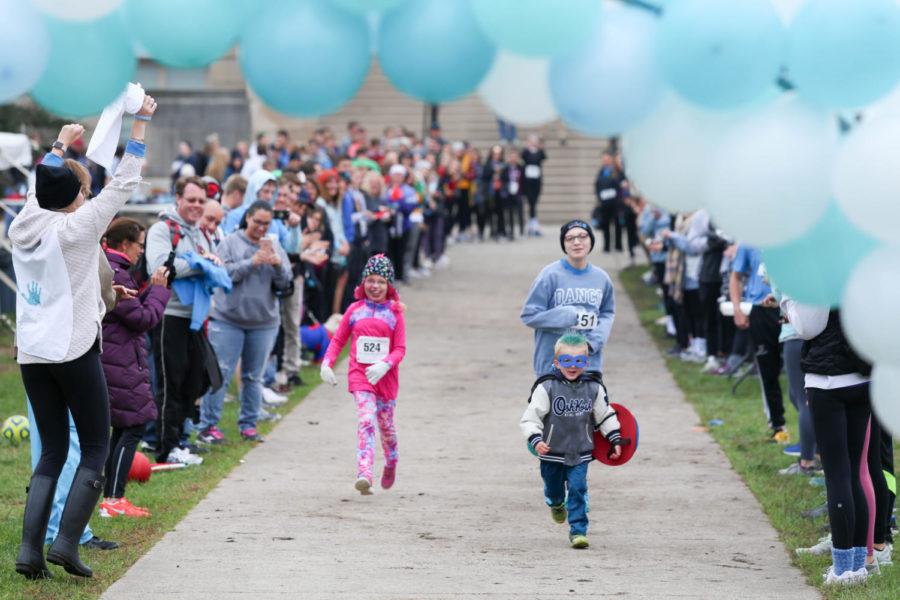Stowers: Children need to play outside more
Danielle Peterson/Iowa State Daily
The miracle kids started the 4k for the Kids run/walk Sunday morning as the other participants cheer them on, on Central Campus.
October 30, 2018
Remember the good old days of elementary school, when we had free playtime scheduled into our day? When we counted down the minutes to when we could sprint out to the swing set or climb up the fireman’s pole?
Remember the dread every new school year when as we got older, our recess time dwindled? And when we hit middle school, when there was none at all?
Although it might not seem like that long ago, the state of childhood has evolved and that dread we felt losing our own outdoor time is facing the kids of today.
American children spend less time outside per day than maximum-security prisoners do. Prisoners are required two hours per day outside — 120 minutes. Elementary school recesses average only 27 minutes.
Young people have their lives ahead of them. Of course, they need to master reading and math, but children lose a lot when they stay indoors.
Without spending time outside, children’s physical and mental health is greatly impacted. Now more than ever, children are at risk for obesity, which is only exacerbated by lack of physical activity, including outdoor play.
Further, an American Association of Optometry study states that spending more time outdoors is correlated with lower occurrence of nearsightedness in children.
This is likely because being outdoors offers a variety of views at different distances and because daylight supports eye development. In addition to the physical aspects, nature offers countless ways it supports mental health.
Shifting the mind from “directed attention,” like focusing on a homework task in the classroom, to “soft fascination,” which requires less directed effort, may alleviate mental fatigue.
Having a place to escape from “traditional life” and be oneself can help reduce frustration and anger. Time outside has numerous positives for kids and kids at heart.
However, as much as nature is an escape, nature itself is not just some faraway place where one longs to visit.
It’s right here, among all of us, even in the most concrete of jungles. Coming to terms with that is often tough, especially as we see open fields making way to construction sites.
Awareness of the local environment can start early, and it can’t start without being outside to observe it.
To paraphrase anthropologist Jane Goodall, to understand is to begin to care and to care is to want to help.
If young people don’t understand or care about their surroundings, what will happen when the world’s problems are handed down to them? Thinking about our own efforts as college students to make our campus a better place, we need young peoples’ hands on deck if we want to improve the world.
Of course, as college students, we need to make some of these changes for ourselves.
After all, it really hasn’t been that long since we were picking up acorns and playing in the dirt (just ask your mom about that).
Richard Louv, author of “Last Child in the Woods” and a proponent of environmental education, said that people our age “have tasted just enough nature to intuitively understand what they have missed.”
Many of us grew up in expanding suburbs or towns without huge swaths of green, but we long to take trips out to Ledges or Peterson Pits. Nature is still right here, and among the craziness of college life, we need to make time for our own little escapes.
It can even be as simple as sitting on Central Campus enjoying the sunlight.
Take a moment to wonder. Take a moment to be curious. We’re still learning, growing and changing, just as we were in the “good old days.”
Seek to understand and to care, as well as to help yourself and other kids to be kids again. We’re not going to be the last ones in the woods.







